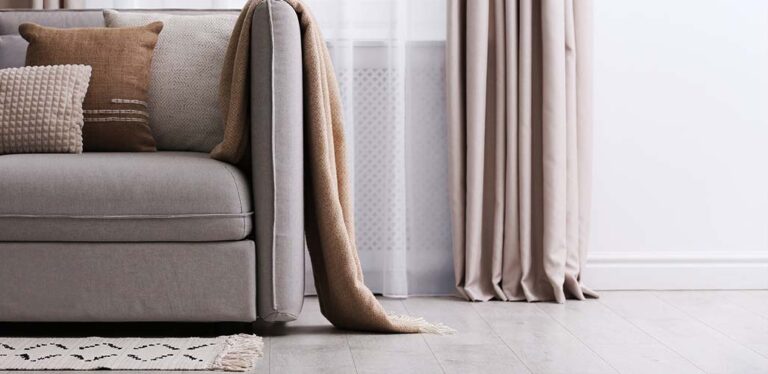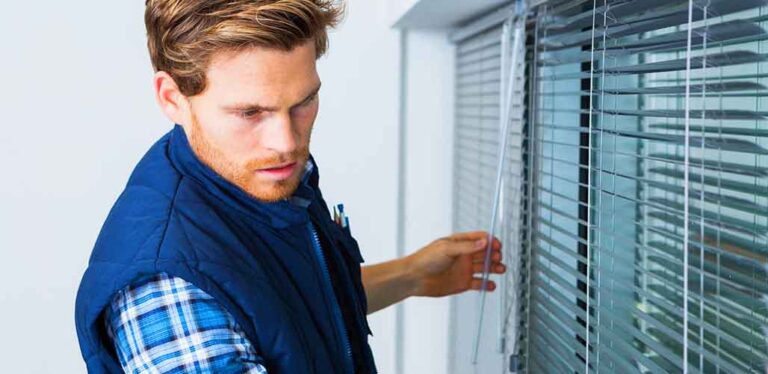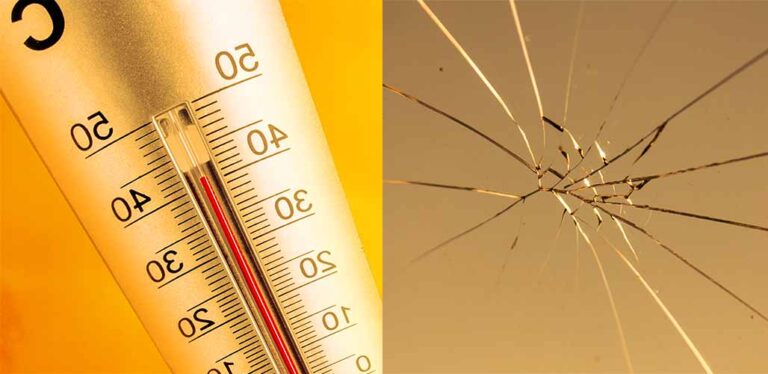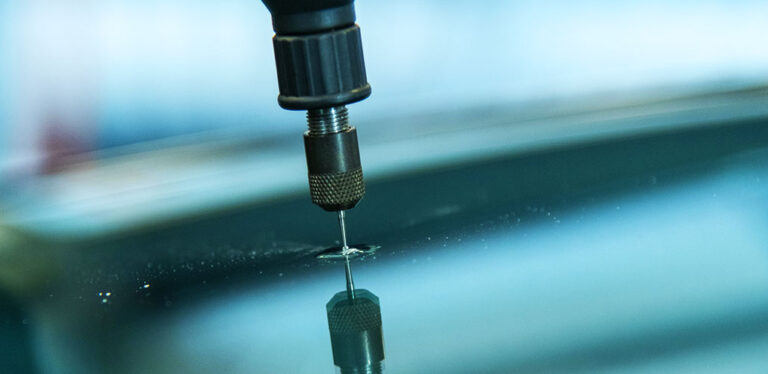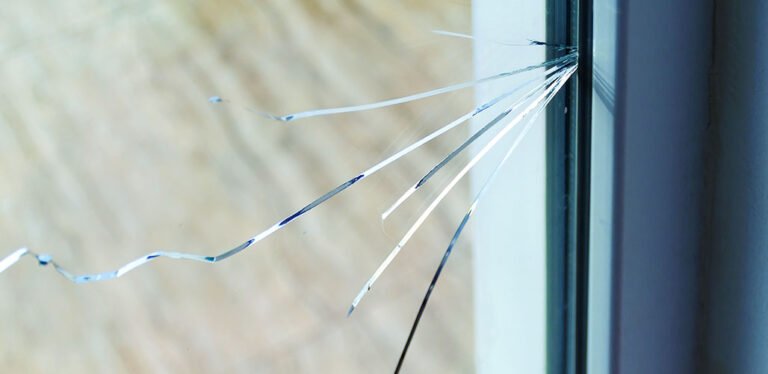Why are my blinds bowing in?
One day you notice something at your window – why are my blinds bowing in? The vendor won’t take them back and blames you for the damage. But is it really your fault? Sometimes blind slats deviate from their standard flat shape to form a bow-like shape. This bowing is called warping, and it is common in wooden blinds. Today I’ll share why my blinds have bowed in before, and how I stopped it from happening again.
Contents
- Why are my blinds bowing in?
- Which blinds are most likely to bow in?
- How do I stop my blinds from bowing in?
- What type of blinds should I get?
- Why are my blinds bowing in and can I correct it?
Why are my blinds bowing in?
Blinds warping is due to environmental stress and uneven shrinkage. The most common materials used to make blinds are plastic, wood, or a blend of the two. These materials react differently to environmental and physical stress. Warping is mostly common in faux wood, composite wood, and wooden blinds. Bowing in blinds is caused by:
- Heat
- Moisture
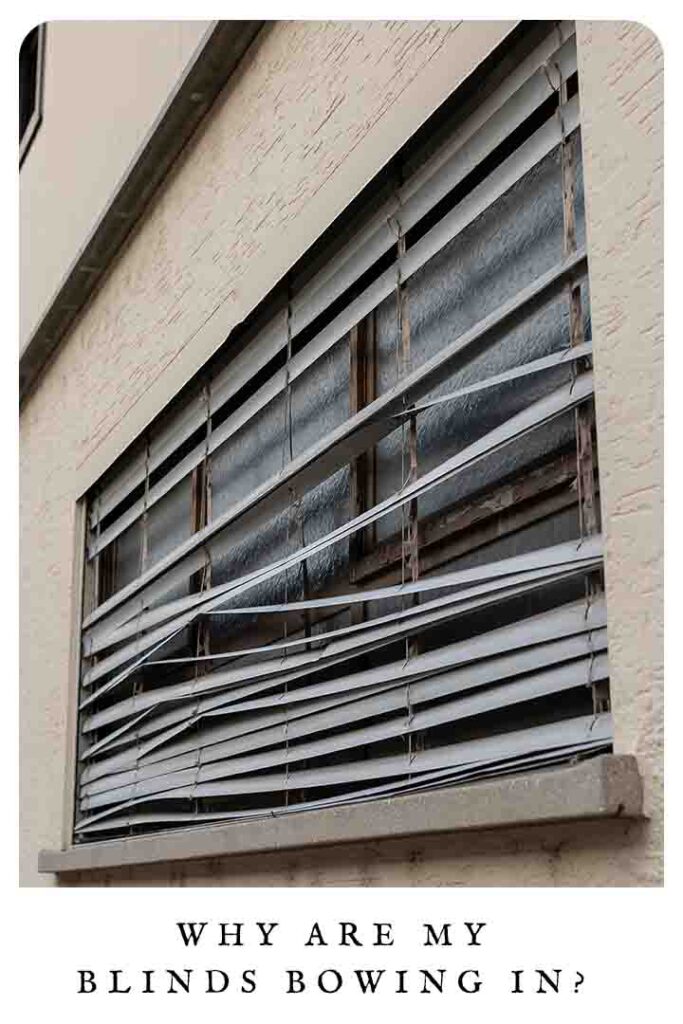
Exposure to heat
One of the reasons we install blinds is to block out the sun’s blistering rays. So we tend to assume that sunlight won’t affect them. That is not always the case. The slats on blinds sometimes bow after prolonged exposure to heat from sunlight. Especially blinds in sunrooms or south facing windows, which get especially hot. The sun is not the only source of bliand-warping heat. Domestic heat sources like furnaces, fireplaces, log burners and ovens can also cause bowing in plastic blinds.
While plastic is a sturdy material, it does not respond well to extreme temperatures. Faux wood blinds are plastic and prone to warping under extreme heat and temperature. Composite wood blinds are also susceptible to extreme temperatures. Composite wood blinds are made from a blend of plastic resins, polystyrene, synthetic PVCs, and wood pulp. Although it has some wood in its makeup, it’s not the main component. Instead, plastic is the bulk of composite wood blinds.
Color can make blinds more susceptible to bowing too. Avoid dark-colored slats as they absorb more heat, and may bow more easily.
Exposure to moisture
Plastic and faux wood blinds are waterproof as they are made from PVC. Even wooden composite blinds are pretty resilient to water, because the wood pulp in them is bound inside plastic. But wooden blinds are highly sensitive to water damage.
Water can seep into the wood, causing the slats to expand and bow. As the wood dries out, the slats shrink again. This expansion and contraction take a toll on the wooden slats, and bowing occurs when wooden slats dry unevenly. One side of the slat dries and contracts faster than the other, warping and bowing in. When the whole slat is dry, the bend stays fixed in place. In extreme cases, the sats crack and break.
Unfortunately, water damage on wooden blinds is irreparable. And it doesn’t just occur when blinds come into direct contact with water. Humidity in the air is enough to warp wooden blinds over time. So I recommend keeping wooden blinds out of high-humidity rooms like kitchens and bathrooms.
Which blinds are most likely to bow in?
The susceptibility of blinds to warping depends on two factors – color and material:
Dark colored composite and faux wood blinds
You have learned how prolonged exposure to sunlight can warp blinds. Real wood blinds perform well under high temperatures. Composite and faux wood blinds bow more readily under heat because they are made of plastic..
Dark-colored composite and faux wood blinds are more sensitive than their light-colored equivalents. This behavior is no surprise because we all know that light colors reflect light while dark colors absorb it. Dark-colored composite and faux wood blinds are more likely to warp than light-colored equivalents.
Real wood blinds in humid conditions
Wood is prone to water damage. Water absorption causes wooden slats to expand. Real wood slats handle atmospheric humidity and direct contact with water poorly. Humid conditions expose real wood blinds to warping.
How do I stop my blinds from bowing in?
From the post, you know that composite and faux wood blinds do not fare well in the sun. You also appreciate that real wood blinds are prone to damage in humid conditions. So how do you prevent warping?
Keep real wood blinds away from humid and wet conditions
Real wood blinds are beautiful, and they have timeless appeal. Real wood blinds make excellent window treatments for hallways, bedrooms, and living rooms. Wooden slats bow after prolonged exposure to moisture. It wouldn’t be wise to install wooden blinds in bathrooms and kitchens. Keep your real wood blinds in dry rooms.
Keep plastic blinds away from heat source
Heat degenerates plastic blinds. While composite and faux wood blinds have wood in their names, plastic makes up a significant part of their structure. Heat, natural or artificial, bows the slats of these blinds and causes warping.
If you have composite or faux wood blind, you can avoid warping by:
- Avoiding installation near ovens, furnaces, and stoves.
- Avoiding installation above strong radiators.
- Avoid installation on south-facing windows.
- Buy better quality plastic blinds.
If you must have faux or composite wood blinds on a window that gets hot, pick a high-quality blind. High-quality blinds have a reduced risk of warping. You can further reduce the chances of bowing by opting for a lighter color.
What type of blinds should I get?
Here are some more pointers for picking the right blinds for your room:
Real wood blinds
Real wood blinds have excellent tolerance to heat and sunlight. Wooden blinds are also susceptible to water damage. Wooden blinds are an excellent solution for all rooms except wet or humid spaces.
Real wood blinds are ideal for:
- Living rooms
- Study rooms
- Bedrooms
- Nurseries
Real wood blinds are not recommended for:
- Kitchens
- Bathrooms
- Laundry
Composite Wood Blinds
Composite wood blinds are made from a blend of PVC, polystyrene, and wood pulp. Plastic makes the core of composite wood blinds. Heat denatures plastic and causes warping. A light-colored composite wood blind may perform better against sunlight.
Composite wood blinds are ideal for:
- Kitchens
- Washrooms
- Laundry
Composite wood blinds are not recommended for south-facing windows or heat traps.
Faux wood blinds
Faux wood blinds offer the aesthetic of wooden blinds at a budget price. They are made from PVC, a thermoplastic. PVC is a favorite in many industries for its low cost and high cost-to-weight ratio. The disadvantage to this thermoplastic is that it is susceptible to high temperatures.
Faux wood blinds are ideal for:
- Kitchens
- Laundry rooms
- Washrooms
Faux wood blinds are not ideal for heat traps or south-facing windows.
Why are my blinds bowing in and can I correct it?
Hopefully you’ve got a pretty good handle on what is causing your blinds to warp now. Unfortunately bowed blinds cannot be made straight again. Once the materials in them have been denatured, the damage is irreversible and they cannot be restored to how they were. The only solution is to replace them with a new blind in a smarter, more suitable material for the location.
Why are my blinds bowing in?
Blinds bow because of the materials that make them and the conditions we expose them to. Wooden blinds warp because of regular continuous or fluctuating exposure to moisture. Composite and faux wood blinds warp because of prolonged exposure to sunlight or high temperatures.
With this knowledge, you can now identify the factors causing your blinds to warp. I hope you have gained the confidence to know how to pick up blinds and where to install them.
Where have blinds bowed in your home?
Let us know which room they were in, and what the culprit was in the comments box down below. What are you planning to replace them with?

